Entries tagged with “asbestos”.
Did you find what you wanted?
Thu 19 May 2016
Posted by admin under Asbestos, Grant, Hazard Communication, hygienist, industrial hygienist, Lead, Leaded Sheetrock, Noise, OSHA, Presentation, Risk, Silica, Training, Uncategorized
Comments Off on Coming soon – Free Video & Training Materials (Health Hazards in Construction)
Exciting news! In just a few months we will be releasing free training materials!
In summary: I applied (and obtained) a grant through OSHA to produce training materials for the four major health hazards in construction. We are titling it, “Focus 4 Health Hazards for Construction”.  (similar to the Focus 4 Susan Harwood training materials available at OSHA)
Indented audience is for younger construction workers in hazard recognition of, 1. silica, 2. noise, 3. asbestos and 4. lead (pb) in construction. A short video (1-4 minutes) for each subject gives an introduction to the hazard. And, to follow up a training power point presentation (and short summary) will also be available to further instruct people in how to control and protect themselves.
On a personal level…it has been exhausting, and I’ve learned a lot!  From obtaining the grant, to hiring a videographer, filming, securing filming sites, and quarterly reports…. exhausting.  But, I’m confident you (and others) will enjoy it. Subscribe (via email) to keep updated. You can also follow me on instagram: “adventuresInIH”. (link coming)
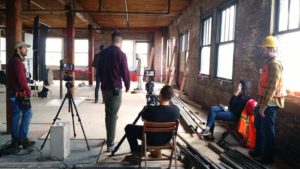
Wed 30 Dec 2015
Posted by admin under Asbestos, Dust, Ethics, Exposure, Hazard Communication, occupational hygiene
Comments Off on Asbestos – same hazard, new disease
It’s probably not a new disease, but there are more cases being discovered for type of cancer called, peritoneal mesothelioma. This cancer is found in the stomach, and is cause from eating asbestos (probably not on purpose, but through the body’s normal ability to capture particulates). They are calling this cancer the “third wave”, in addition to asbestosis and mesothelioma (in lungs).
The Center for Public Integrity released a video and article on a dramatic case, Kris Penny, on Dec 17, 2015. NPR picked it up and posted it here. Hopefully more people will be aware of this type of cancer and it can be better reported/diagnosed.
In a related article, from Newser, they suppose this type of cancer is from home exposures, rather than occupational. This information was based upon Australia’s Asbestos Safety & Eradication Agency‘s 2015 report.  They claim:
- 40.64% (568) of people had exposures from non-occupational exposures (they are self reporting for the Australian registry).
- 20% (280) of all registration of exposure were women.
- 62.6% (876) of reported exposures were under the age of 49
- The “third wave” of asbestos exposures will be from DIYs
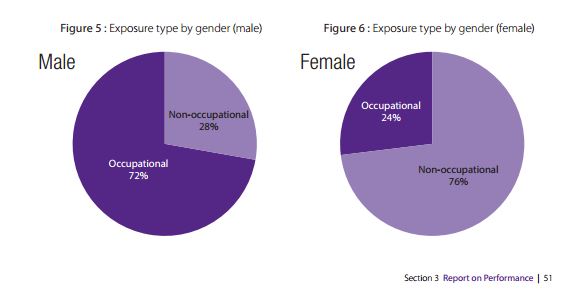
Unfortunately new exposures are still occuring, especially in developing countries. There is an effort to stop asbestos use in these countries, and you can join one group, Global Alliance Against Asbestos.
Tue 17 Jun 2014
Posted by admin under Admin Controls, Air Monitoring, Asbestos, Building Survey, Carcinogen, Chemical Exposure, Exposure, Hazard Communication, occupational hygiene, Risk, Uncategorized
Comments Off on How do I know if I’m disturbing asbestos?
This question gets asked a lot, and in many different ways. Such as:
- Will I get hurt if I touch asbestos? (aka: How long can I be exposed?)
- What if I have done siding removal/cutting pipe/removed TSI (etc)Â on an asbestos containing product, am I safe?
- If I am only doing going to do touch asbestos for 20Â minutes (or ___ time), will I still be in compliance?
- I am disturbing less than 3 square feet of asbestos, I can do this legally, right?
The answer is: Â it depends.
Or, an alternative answer:Â if you think you are disturbing asbestos; you’d better verify (by performing an air sample).
Nowadays there is no excuse for exposing employees, tenants, neighbors to asbestos. And, really, if you are working with asbestos, you need to be extra diligent to inform everyone about the hazard. The worst situation isn’t from a single exposure to asbestos, or an OSHA fine. The worst situation is this:  when you don’t pre-plan, and then verify your exposure levels. Because, someone will make up a worst case scenario, and at that point, you are already behind.
Wed 27 Nov 2013
Posted by admin under Asbestos, Building Survey, Dermal, Drywall, Dust, Exposure, Fall Protection, Gloves, hearing protection, Ladder, Ladders, Lead, Leaded Sheetrock, Management, Noise, occupational hygiene, OSHA, Powder Actuated Tool, Respirators, safety, Silica, Uncategorized
Comments Off on Top 10 Hazards of drywall
I titled this post, “hazards of drywall”, but it encompassing most of the common hazards of plaster, mud, gypsum, wall-hangers, tapers, and acoustic employees.
-
Corrosive drywall.
I have not dealt with this subject on a personal level. However, AIHA has a new guidance document titled, “Assessment and Remediation of Corrosive Drywall: An AIHA Guidance Document“, which is a clarification of an earlier white paper document from 2000, titled, “Corrosive Drywall“. The danger is from a specific type of drywall which was imported from China. After installation it is known to emit sulfide vapors, which corrode copper (electrical wires), and can give off a sulfur smell (HT to JeffH in Ohio).
-
Asbestos in mud/plaster.
Be aware, some older buildings (pre 1980s) may have asbestos in the mud compound or plaster (not as common). This will be a concern if you are performing demo on these walls. Info here.
-
Silica (dust) in joint (mud) compound.
Some types of silica I have found to have silica. This can be an issue when sanding. AND, if you install drywall like me…you do a lot of sanding. More information from an earlier post can be found here. NIOSH has some suggestions too.
- Leaded sheetrock. If you are installing (or demo) leaded sheetrock, you NEED to protect yourself. Airborne levels of lead can approach the exposure limits, even during installation. More info here.
- Lead in paint. If you’re tying into existing plaster/drywall and there’s paint, you need to know if there’s lead in it. Sanding on the paint is a good way to be exposed. More info here.
- Ergonomics. Hanging the wallboard takes a toll on your body after 20 years (or less). Not to mention sanding. Washington OSHA (L&I) has a good demo.
- Noise. Cutting steel studs, powder actuated tools (there’s lead exposure too, you know).
- Skin hazards. Cutting, but also dermatitis from prolonged exposure to dust.
- Eye hazards. Dust, carpentry, etc. Working overhead is an easy way to get falling items in your eyes.
- Falls. Last on my list, but certainly not the least. Scaffolding, working from ladders, and using stilts, to name a few.
Fri 6 Sep 2013
Posted by admin under Asbestos, Building Survey, Cadmium, Carcinogen, Exposure, Lead, Management, OSHA, Uncategorized
Comments Off on Let me give you a “hypothetical” worst-case scenario:
Hypothetically (and allegedly):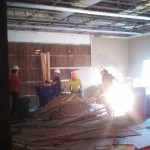
- You receive a project as a subcontractor.
- You are verbally told no asbestos or lead onsite. Only that’s not true.
- There is asbestos, and you, and multiple other subs, have disturbed it.
- The prime contractor says, “oops”. Has the materials tested, and then blames the owner for not letting them know.
- OSHA is called and citations are issued to the owner and GC for not testing and telling people.
- A year goes by and now both the owner and GC are being sued by 5 employees for $10,000,000 (yep $10 million, that’s the max BTW).
- As a footnote: this incidentally is not a worker compensation case (yet) since they are not suing their employer (they are suing the GC and owner)
Even if the employees don’t win $10m, are you prepared for: the headache, loss of client-relationship, trust breaking? Here’s a similar hypothetical article about such a situation.
On the flip side, here are some positive things you can do:
- get a written copy of the building survey (lead & asbestos) ALWAYS. (you might also ask for cadmium, radon, other possible hazardous substances)
- Train your employees about asbestos prior to having to deal with it.
- Give employees the power to “stop work” if they are suspicious of possible asbestos containing material (PACM).
- When handing out a building survey to your subs, get their acknowledgment (in writing, of course)
- Fight your OSHA citations. Go to your informal conference. Present your evidence and, at the very least, beg for forgiveness.
Fri 22 Mar 2013
It’s always fun to hear about new/different situations especially when the contractor handles it properly.
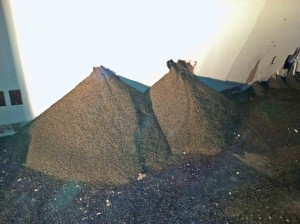
During the start of a demolition on a 1989 structure, the first swing of the hammer produced a pile of vermiculite sand.
After some discussion on “what in the world is this doing inside a wall cavity“. The contractor stopped work, had an asbestos test performed and quarantined the area. The bulk sampling for asbestos came back with the report of “asbestos containing, but less than 1%“. Well, as you know (and as I have mentioned earlier) it may not be safe to treat this product like every other demolition project. In this case, the asbestos was very friable and by opening the wall cavity, it had definitely been disturbed.  The contractor quickly set up some procedures. Here they are:
- Stop work in area. Quarantine area and place warning on doors.
- Train employees & subcontractors onsite to hazard (asbestos).
- Abatement contractor will remove wall & vermiculite
- Abatement contractor will treat the material as if it is asbestos containing
- Once the area is abated. An aggressive clearance test will be performed to assure no airborne levels of asbestos are present.
But why in the world was it in there in the first place? The best guess is it was added as a sound proofing / noise dampening for a air conditioning unit (actually a liebert unit) located on the adjacent wall. No other wall cavities contained the material.
Fri 4 Jan 2013
Posted by admin under Air Monitoring, Asbestos, Building Survey, EPA, industrial hygienist, Lead, Risk, Training
Comments Off on Asbestos Building Inspectors (AHERA)
If you have a building built pre 1985 (I know this date can be different, but I’m playing it safe) before bidding a project you need to have an asbestos survey performed, called a building inspection.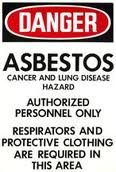 Honestly, they usually aren’t done before bidding. SOMETIMES, they’re performed before starting the work (not good).
Honestly, they usually aren’t done before bidding. SOMETIMES, they’re performed before starting the work (not good).
How do you find a good building inspector? …Google?, Yellow pages (who does that anymore?) Abatement contractor?
Whomever you hire, make sure they have a current AHERA Building Inspector Certificate. This is a Federal program maintained by TSCA Title II EPA AHERA/ASHARA Model Accreditation Program. This is your only recourse if something goes wrong. It doesn’t matter if have have a PhD, CIH, ROH, CSP and MBA, they MUST have a current AHERA Building Inspector Certificate.
Here are some things to consider:
- Does the Building Inspector have a current certificate?
- Will they sample for asbestos?
- Which lab will they use for analysis? Their own? (not always a bad thing)
- Which areas are they unable to access in the building?
- Will they check for leaded paint?
- Will they take pictures?
- How long till you will get the results & report?
- Will they write a report?
- Are they capable of performing air monitoring? (worth asking, but not a deal-breaker)
- Will they look back at previous records / management plans?
- Cost?
Good luck in your search. As most things, a good referral from a friend is probably a great starting spot.
Mon 24 Sep 2012
Posted by admin under Air Monitoring, Asbestos, Management, OSHA, Safety Programs, Training
Comments Off on I have asbestos, but it is less than 1%.
Assume your general contractor reports that he has found a material (floor tile, popcorn ceiling, etc) with less than 1%. He wants you to remove it with the rest of the demolition because, as you know, “…if it’s less than 1%, it’s NOT considered asbestos containing!”.
Are you ok to remove it?
Yes, and no. There is more to consider. The “1% rule” (as it’s called) as it is called states that they only regulate asbestos containing materials if they contain more than 1% of asbestos. Here are a few other considerations:
- OSHA definition. Don’t get stuck on the definition. If you have employees, you must still follow parts of the OSHA rules. At a minimum, you must train your employees, work practices, clean-up and disposal requirments. More details on training here.
- How were the samples taken? If one bulk sample shows less than 1% asbestos, you still might have a problem. According to the EPA/AHERA sampling rules, some types of materials must have up to 7 samples taken. This rule is in place because, back in the day, asbestos was added to joint compound (or anything similar) and it could really vary in amount according to where you take the sample. In addition, OSHA does not allow for composite sampling (combining the layers).
- Do you know that 0.99% asbestos is still bad for you? Asbestos is a carcinogen. The greater the exposure, the greater the risk of disease. Any exposure could be the one to cause the disease. If the material is friable and you are disturbing it, I would NOT recommend performing that activity. Hire an abatement contractor.
- Finally.Let’s assume it’s non-friable, you are not going to disturb it (when removing it) and it’s less than 1%. What will you do if your neighbor next door decides to call OSHA/EPA? Do you have a written plan and procedure? Have your employees been trained on the hazard? How to remove it? How to dispose of it? …Sometimes bad publicity will get you in worse trouble than any monetary fine.
 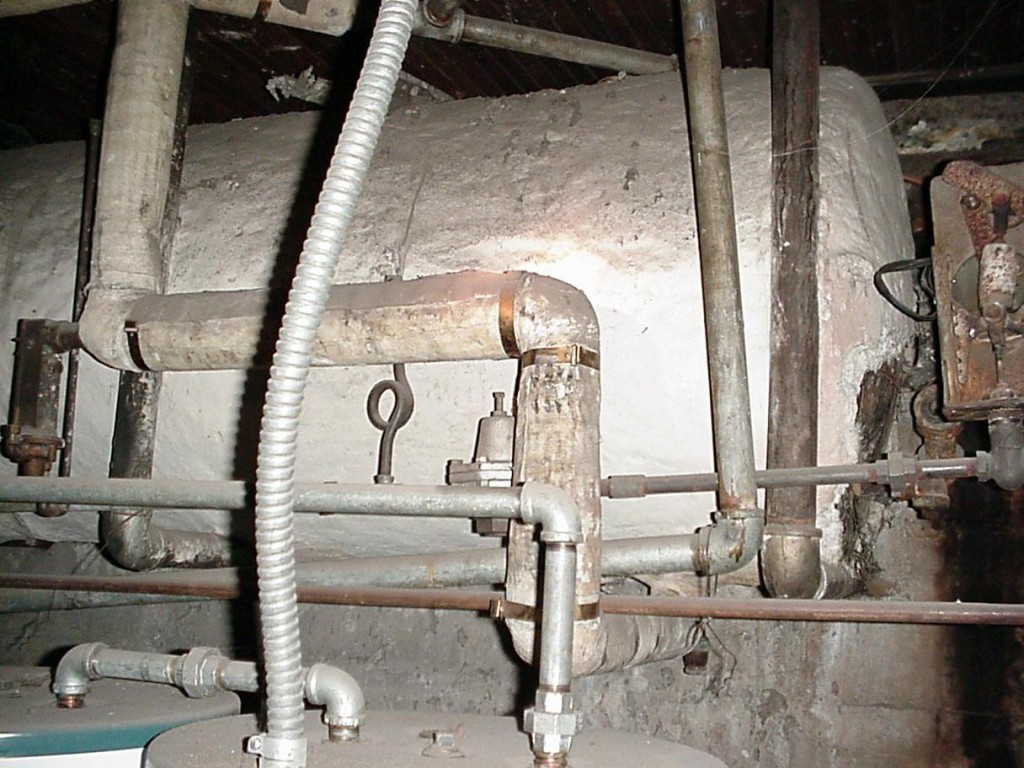
Wed 18 Jul 2012
Posted by admin under Air Monitoring, Asbestos, Building Survey, Hazard Communication, Management
Comments Off on What if you’ve had asbestos exposure?
 Occasionally (actually, far too often), I hear from a subcontractor who was told by the General Contractor (or owner) there is no asbestos onsite. Then, after they have been working for a month they find out it actually IS asbestos, and they were disturbing it. What do you do?
Occasionally (actually, far too often), I hear from a subcontractor who was told by the General Contractor (or owner) there is no asbestos onsite. Then, after they have been working for a month they find out it actually IS asbestos, and they were disturbing it. What do you do?
The first thing to do is stop work. Do not try to clean it up. Call an abatement contractor. They will identify the asbestos onsite, clean it up, and provide an airborne clearance test.
Next, you will need to provide awareness training (or better, let the abatement company provide it). Ideally this will occur on the day you start back working. Train everyone onsite about asbestos.
Finally, you (as the safety manager), need to identify and characterize the exposure to the employees. It should probably be a formal letter written to the owner, general contractor and employees.
Here are some tips on writing the letter:
- include employee names, work hours, type of work, PPE worn, and locations they were working
- describe the asbestos. Amount found, locations, type, estimated amount disturbed.
- describe remedy process and steps taken. Names of GC, owner, abatement company, airborne levels found. Who was trained afterwards.
- describe how things will change in the future. Here’s a tip: Â any building before 1985 WILL have a building survey performed for asbestos….in writing.
Really, one exposure to asbestos is probably* not enough to contract a disease (asbestosis, or mesothelioma). It will take 15-30 years for symptoms to appear. But, it might be worth the “goodwill” to send affected employees into a occupational health doctor for a check up. The physician will reassure the employee and may provide some comfort.
*asbestos is a carcinogen. Greater exposure = greater chance of cancer. no amount is safe.
Mon 16 Apr 2012
Occasionally I hear of certain (construction) trades having to touch asbestos. Usually it is an electrician, sheetmetal worker, carpenter, or plumber.
How it usually happens is that they have a small remodel/install/repair. They must cut through the asbestos to install the item (duct work, electrical, plumbing). Be careful. If you look at OSHA’s definition you may not be able to perform this type of work without specific training. In some cases, 16 hours of asbestos-specific training!
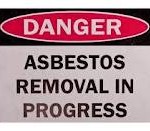 If you work with any type of asbestos (or, are even near it) you must have Class IV (4) training. This is a 2-hour training which is defined as, “…contact, but DO NOT disturb asbestos…”. As a contractor, you want to make sure you fall under this type of training. The alternative is,
If you work with any type of asbestos (or, are even near it) you must have Class IV (4) training. This is a 2-hour training which is defined as, “…contact, but DO NOT disturb asbestos…”. As a contractor, you want to make sure you fall under this type of training. The alternative is,
Class III (3) training. This type of training where employees are, “likely to disturb” asbestos. Â If you think you disturbed asbestos in your activities, you REALLY should prevent it. Here are some suggestions for making sure you never disturb asbestos.
- Always, always get (in writing) a building survey for asbestos (and leaded paint) before performing work
- Train your employees in how to recognize asbestos, etc. (Class IV training as a minimum. See my earlier post)
- Establish procedures for how you will prevent contact with asbestos
If you must touch (and possibly disturb it) asbestos then also,
- Have specific procedures for how you prevent exposure
- Have PPE (including respirators)
- Obtain air monitoring data while you are performing your activities – document that you DO NOT disturb the asbestos
- Dispose of the material properly
Asbestos is one of those hazards you can’t ignore. If you are not doing the correct procedures, it will bite you (a claim, a citation, a lawsuit, horrible PR, or someone getting ill!).








